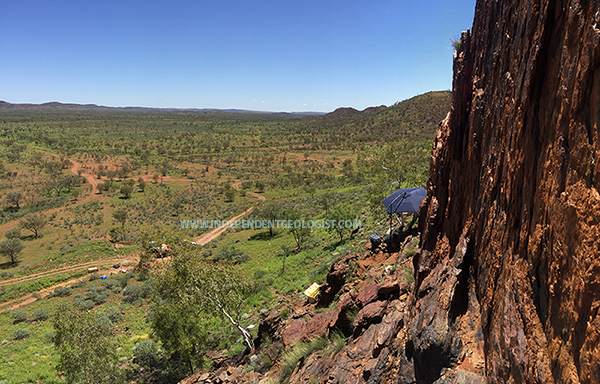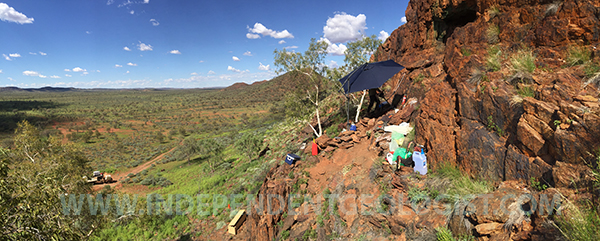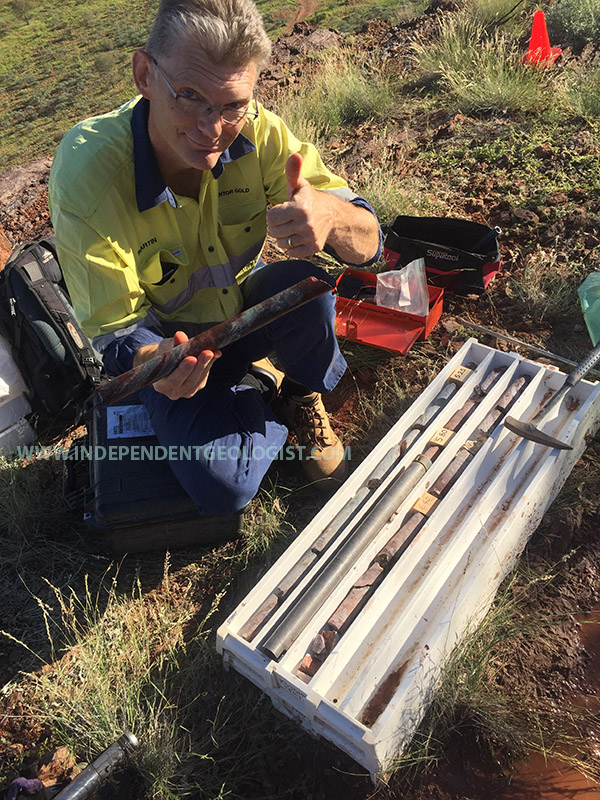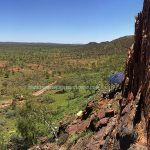
Drilling a highly foliated schistose rock on the side of a cliff in the Northern Territory.
Man-portable core drills are typically used in the early stages of exploration or for prospecting to identify sub-surface extensions of mineralisation. They are low cost alternatives to larger more expensive drills, requiring little or no regulatory approval for pads or tracks. This makes them quick, cheap and versatile.
Recent work in the Northern Territory desert for KGL Resources took the use of the man-portable drill to new heights: from exploration into the realms of Resource definition.
Infill drilling into known mineralisation can build up a level of confidence about the size and quality of the mineralisation to the point where it can be categorized as a ‘Resource’. But, what happens when a rugged topography prevents larger drill rigs accessing infill sites? The lack of infill information results in known mineralisation not being included in a Resource, underestimating both the size and value of that Resource. The value of that Resource underpins the value of the mineral asset. Thus, it’s non-inclusion negatively influences company value.
When that undrilled mineralisation is also located between the surface expressions of mineralisation and drilling at depth, then the ‘missing’ Resource is all the more valuable. This is because the mineralisation closest to surface is typically most accessible to mining, representing lower capital costs of development and earlier cash-flow to the company!
Man-portable core rigs typically do not replace larger rigs! A larger rig will get a larger, deeper sample more efficiently. However, they are more expensive to run, typically require access roads and prepared drill sites, which in turn may necessitate regulatory approval and the chance of increased bonds.
For KGL, the extra expense of using a larger drill rig was partially avoided by using Independent Geologist’s true man-portable drilling rigs. Each rig, complete with rods was mobilized by two people. No site preparation was necessary and separate approvals were not required. Hole depths were limited to less than 10m but could be spread in fences from cliff bottom to mid-cliff to cliff top. Hole positioning could be adjusted on the fly based on results at hand, with rig moves taking less than 1 hour.

Man-portable drills access confined spaces otherwise inaccessible to larger drills.
This drilling program requiring no separate approvals, no rehabilitation, no ground preparation and collared directly into mineralisation.
The end result? This low cost drilling program provided information on mineralisation with an in-ground value measured in the millions!
Click to read the KGL ASX release.

Another satisfied customer holder core produced using our man-portable drills.
